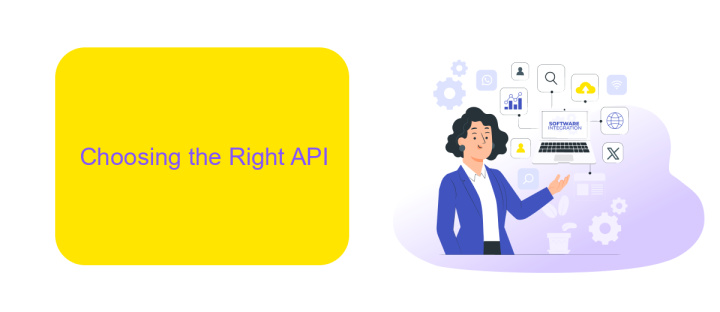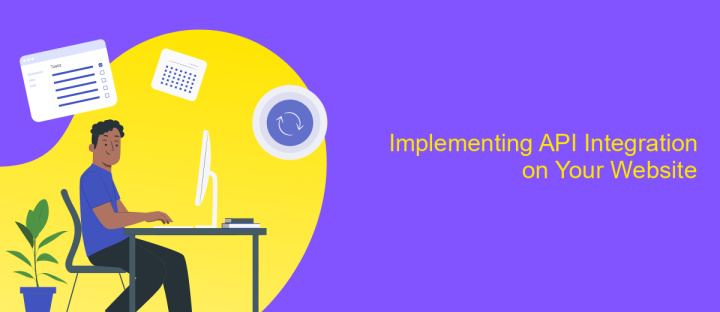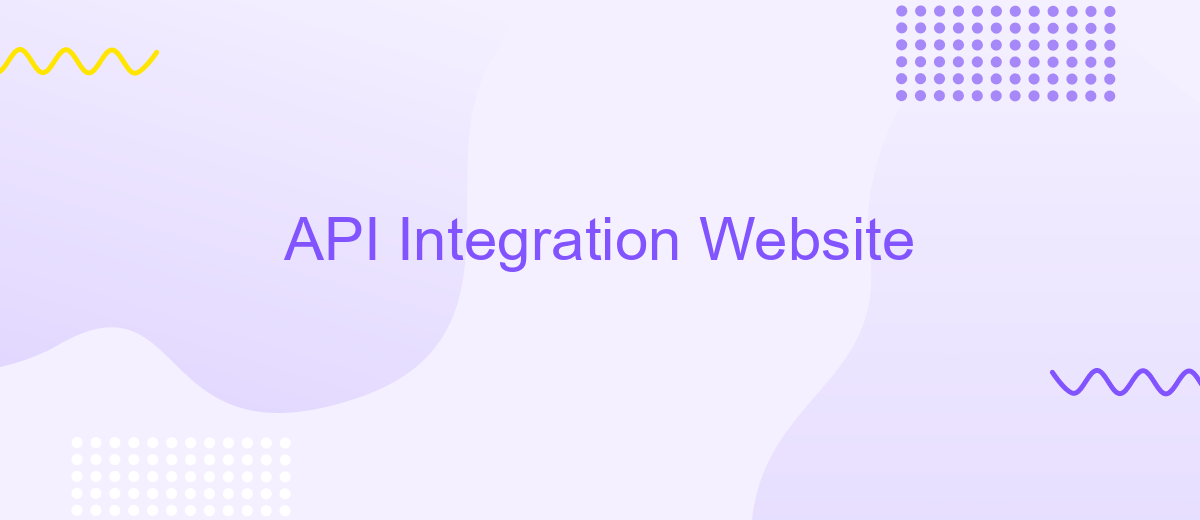API Integration Website
API integration is a crucial component for modern websites, enabling seamless communication between different software systems. By connecting various applications, businesses can enhance functionality, improve user experience, and streamline operations. This article explores the fundamentals of API integration, its benefits, and the best practices for implementing it on your website. Discover how integrating APIs can transform your digital presence and drive growth in today's competitive landscape.
Introduction to API Integration
API integration is a vital component in modern web development, enabling seamless communication between different software applications. By allowing disparate systems to exchange data and functionalities, APIs (Application Programming Interfaces) facilitate the creation of more dynamic and efficient websites. This integration not only enhances user experiences but also streamlines business operations by automating processes and reducing manual intervention.
- Improves connectivity between various software platforms.
- Enables real-time data exchange and updates.
- Facilitates the development of scalable and flexible applications.
- Reduces development time and costs through reusable components.
- Enhances user engagement with personalized features and services.
As businesses continue to leverage digital solutions, the demand for robust API integrations grows. Developers must focus on creating secure, reliable, and scalable API connections to meet these evolving needs. By doing so, they can ensure that their websites not only meet current technological standards but also remain adaptable to future innovations. This proactive approach to API integration will be crucial in maintaining competitive advantage in an ever-evolving digital landscape.
Choosing the Right API

When selecting the right API for your website integration, it's essential to consider several factors to ensure seamless functionality and performance. Start by evaluating the API's documentation and support resources, as comprehensive guides and responsive support can significantly ease the integration process. Additionally, assess the API's compatibility with your existing systems and technologies to avoid potential conflicts or extensive modifications.
Security and scalability are also crucial considerations. Ensure the API adheres to industry-standard security protocols to protect sensitive data. Furthermore, opt for an API that can scale with your business needs, accommodating increased traffic and functionality over time. Services like ApiX-Drive can simplify this process by offering user-friendly tools for automating integrations, allowing you to connect various applications without extensive coding. By carefully weighing these factors, you can choose an API that not only meets your current requirements but also supports future growth and innovation.
Key Concepts and Technologies

API integration is a cornerstone of modern web development, enabling seamless communication between different software systems. At its core, an API (Application Programming Interface) allows developers to access the functionalities of a service or application without exposing its internal code. This promotes interoperability and enhances the user experience by integrating diverse services into a single platform.
- REST: Representational State Transfer is a popular architectural style for designing networked applications, using HTTP requests to access and use data.
- SOAP: Simple Object Access Protocol is a protocol for exchanging structured information in web services, relying on XML-based messaging.
- OAuth: An open standard for access delegation, commonly used for token-based authentication and authorization.
- JSON: JavaScript Object Notation is a lightweight data-interchange format that's easy for humans to read and write, and easy for machines to parse and generate.
Understanding these technologies is essential for effective API integration. REST and SOAP provide the frameworks for communication, while OAuth ensures secure access. JSON facilitates data exchange, making it the preferred format for modern web APIs. Mastery of these concepts enables developers to create robust, scalable, and secure web applications that can interact with a multitude of external services.
Implementing API Integration on Your Website

Integrating APIs into your website can significantly enhance its functionality and user experience. APIs, or Application Programming Interfaces, allow different software systems to communicate and share data seamlessly. By leveraging APIs, you can add features like payment processing, social media integration, or real-time data updates, making your site more dynamic and interactive.
Before implementing API integration, it's crucial to identify the specific APIs that align with your website's goals. Research and select reliable APIs that offer comprehensive documentation and support. Once you've chosen the right APIs, ensure that your website's backend is prepared to handle API requests and responses efficiently.
- Choose the appropriate API based on your website's needs and user requirements.
- Review the API documentation thoroughly to understand its capabilities and limitations.
- Test the API in a development environment to ensure compatibility and performance.
- Implement error handling to manage API failures gracefully.
- Monitor API usage and performance regularly to optimize integration.
Successfully integrating APIs into your website requires careful planning and execution. By following best practices and maintaining clear communication with API providers, you can create a seamless and efficient integration process. This will not only enhance your website's capabilities but also provide a better experience for your users.
- Automate the work of an online store or landing
- Empower through integration
- Don't spend money on programmers and integrators
- Save time by automating routine tasks
Testing, Monitoring, and Maintenance
Testing your API integrations is crucial to ensure seamless functionality and performance. Begin by conducting unit tests to verify individual components, followed by integration tests to assess their interaction within the system. Utilize automated testing tools to streamline the process and identify potential issues early. Incorporate ApiX-Drive for efficient integration setup and testing, as it offers a user-friendly interface and robust support for various APIs. Regularly update your testing protocols to adapt to new API versions and changes in business requirements.
Monitoring and maintenance are vital for sustaining API integration performance over time. Implement real-time monitoring tools to track API response times, error rates, and usage patterns. Set up alerts for any anomalies to promptly address issues before they impact users. Schedule regular maintenance checks to update API credentials, review security measures, and optimize performance. ApiX-Drive can aid in monitoring with its comprehensive analytics and reporting features, ensuring your integrations remain reliable and efficient. Consistent attention to these practices will enhance the longevity and effectiveness of your API integrations.
FAQ
What is an API and why is it important for my website?
How can I integrate an API into my website?
What are the common challenges in API integration?
How can I automate tasks using API integration?
What should I consider when choosing an API for integration?
Time is the most valuable resource for business today. Almost half of it is wasted on routine tasks. Your employees are constantly forced to perform monotonous tasks that are difficult to classify as important and specialized. You can leave everything as it is by hiring additional employees, or you can automate most of the business processes using the ApiX-Drive online connector to get rid of unnecessary time and money expenses once and for all. The choice is yours!


